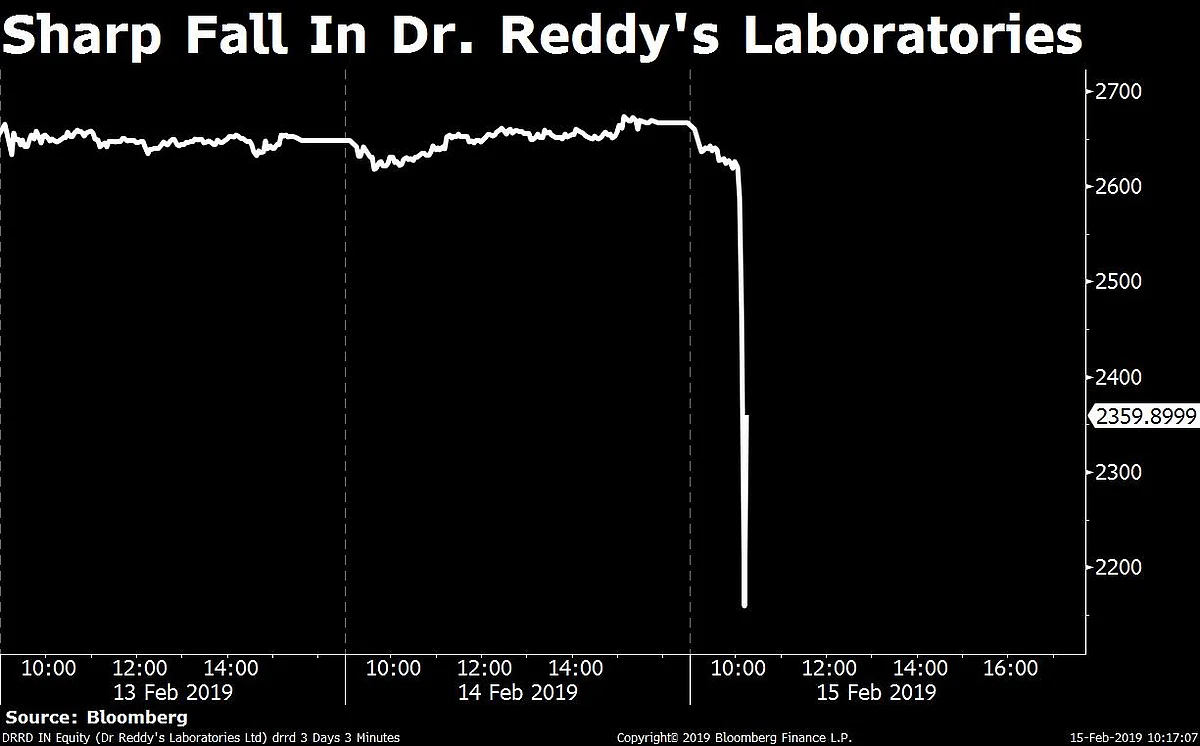U.S. Regulator Reiterates Concerns About Dr. Reddy’s Telangana Plant
Fresh 11 observations repeat four issues highlighted by the U.S. Food and Drug Administration in 2017.

Shares of Dr. Reddy's Laboratories Ltd. tumbled as much as 29.78 percent, the most in more than 17 years, as the U.S. drug regulator reiterated issues regarding manufacturing standards at its plant in Bachupally, Telangana that supplies to the American market.
The U.S. Food and Drug Administration made 11 observations on issues raging from manufacturing procedures to quality control, according to the Form 483 issued by the regulator. Four of these concerns were flagged in a 2017 inspection and one in 2015 as well.
Given the repeat observations and the number of investigations cited, remedial action would take time and will likely require a re-inspection, Piyush Nahar, an analyst at Jefferies, said in a note. The issues are procedural and the company’s response will be key, he said.
Shares of the drugmaker plunged to their lowest since April 22, 2013 to Rs 1,859 apiece on the National Stock Exchange. Dr. Reddy’s is yet to respond to BloombergQuint’s emailed queries.

The Bachupally facility, inspected between Jan. 30 and Feb. 8, accounts for 40-45 percent of Dr. Reddy’s U.S. sales, according to Morgan Stanley. North America is the largest contributor to the company’s revenue at 47 percent. The majority of that comes from the U.S. where Dr. Reddy’s is betting on the generic version of opioid addiction treatment drug Suboxone.
U.S. FDA Observations On Bachupally Plant
- Procedures describing the handling of written and oral complaints related to drug products are deficiently written or followed.
- Quality control unit lacks authority to review production records to assure that no errors have occurred and fully investigate errors that have occurred. (This is a repeat observation for inspection conducted in 2017)
- The quality control unit lacks the responsibility and authority to reject all drug products.
- Appropriate controls are not exercised over computers or related systems to assure that changes in master production and control records or other records are instituted only by authorised personnel. (This is a repeat observation from the inspection conducted in 2017)
- The responsibilities and procedures applicable to the quality control unit are not in writing and fully followed. (This is a repeat observation from the inspection conducted in 2017)
- Master production and control records lack sampling and testing procedures.
- Laboratory controls don't include a determination of conformance to written specifications for in-process materials. (This is a repeat observation from inspections conducted in 2015 and 2017)
- Reserve drug product samples are not representative of each lot or batch of drug product.
- Adequate lab facilities for testing and approval or rejection of in-process materials and drug products are not available to the quality control unit.
- The building lacks adequate space for the orderly placement of equipment and materials to prevent mixups between drug products and to prevent contamination.
- Drains aren’t provided with an air break or other mechanical device to prevent back-siphonage where connected directly with a sewer.